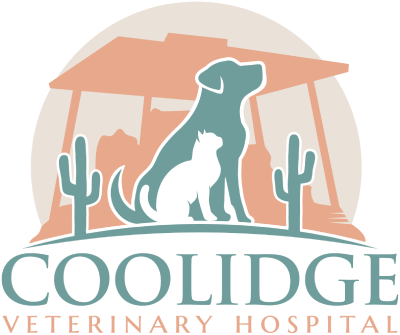Expert Guidance from Coolidge Veterinary Hospital
As a loving pet owner, you're already doing a lot – feeding your dog high-quality food, taking them for walks, and making sure they get regular veterinary care. But there’s one more simple (and surprisingly insightful) thing you can do: pay attention to your dog’s poop.
That’s right – your dog’s daily business is more than just something to scoop. It can give you real-time information about their digestive health, immune function, and overall well-being. At Coolidge Veterinary Hospital, we want you to feel confident identifying what’s normal, what’s not, and when to call us.
Let’s dive into this often-overlooked but incredibly important topic.
This blog was written by Dr. Samantha Gans
Check out her video on What to Do When Your Pet Gets Diarrhea!
What Does Healthy Dog Poop Look Like?
When your dog’s body is functioning well, their stool should have the following traits:
- Shape: Log-like and firm enough to hold its shape, but not rock hard
- Texture: Moist, but not greasy or sticky
- Color: Medium to dark brown
- Contents: No visible mucus, blood, parasites, or foreign objects
Dogs with healthy digestion will typically have consistent-looking stools from one day to the next. Variations should be minimal – if they’re not, that could indicate something’s wrong.
Common Dog Stool Problems and What They Mean
1. Soft or Loosely Formed Poop
Soft poop that still has some form may be due to:
- Sudden dietary changes
- Indiscriminate eating (e.g., trash, yard plants, food scraps)
- Mild stress such as a new environment, loud noises, or unfamiliar people
- Low-grade bacterial imbalances in the gut
Try feeding a bland diet (boiled chicken and rice) for a day or two. If the stool doesn’t improve, or worsens, give us a call for further testing.
2. Diarrhea (Watery or Frequent Stools)
True diarrhea is more serious.
If your dog’s stool is watery, explosive, or extremely frequent, possible causes include:
- Intestinal parasites like giardia, hookworms, or whipworms
- Bacterial infections (e.g., salmonella, campylobacter)
- Viral infections like parvo (especially dangerous for puppies)
- Food allergies or sensitivities
- Chronic conditions like IBD or exocrine pancreatic insufficiency
- Sudden stress or travel
Diarrhea lasting more than 24 hours, especially when accompanied by vomiting, dehydration, or weakness, needs prompt medical attention.
3. Constipation or Hard, Dry Stool
Constipated dogs may strain, cry, or skip bowel movements for more than a day.
You may notice:
- Dry, pebble-like stool
- Straining with little or no result
- Discomfort or bloating
Constipation can be caused by:
- Inadequate hydration
- Low fiber intake
- Swallowing indigestible materials (bones, fur, fabric)
- Reduced mobility or aging
- Neurological issues or back pain (e.g., IVDD)
- Enlarged prostate or anal gland issues
Occasional constipation can be resolved with diet changes, but persistent issues may require bloodwork or imaging to identify an underlying cause.
What Poop Color Can Tell You
Color is one of the most telling indicators in dog poop. Here’s what to look for:
| Color | What It Might Mean |
|---|---|
| Brown | Healthy digestion |
| Green | Grass ingestion, GI upset, or gallbladder disease |
| Black or Tarry | Potential internal bleeding (upper GI)—call us immediately |
| Red/Bloody | Lower GI bleeding or rectal irritation |
| Yellow/Orange | Liver disease or bile duct obstruction |
| Gray/Chalky | Fat digestion problem, often linked to liver or pancreatic issues |
Never ignore black, red, or pale stool. These may signal life-threatening conditions.
What If You See Mucus, Worms, or Foreign Material?
- Mucus: A small amount may be normal, especially during transitions. Persistent, slimy stool suggests colitis or inflammation.
- Worms: Tapeworms look like rice grains; roundworms resemble spaghetti. Both require veterinary treatment.
- Foreign Objects: Plastic, grass, string, bone fragments, or cloth should raise red flags, these could indicate dietary indiscretion or an intestinal blockage.
Bring both your dog and a sample of the stool to the clinic so we can determine next steps.
How Often Should Your Dog Poop?
Healthy dogs usually poop 1–3 times a day, but this varies based on:
- Age
- Diet
- Exercise
- Breed
- Individual metabolism
Sudden changes in frequency can point to health issues even if the poop looks normal.
When to Call Coolidge Veterinary Hospital
We recommend contacting us if your dog:
- Has diarrhea or constipation for more than 24 hours
- Is straining, in pain, or crying while trying to poop
- Has blood or mucus in their stool
- Shows vomiting, appetite loss, or lethargy
- Has worms or foreign material in their poop
- Shows changes in color, smell, or frequency that persist for several days
How We Diagnose and Treat Poop-Related Problems
Our clinic offers:
- Fecal exams to test for parasites, bacteria, or protozoa
- Bloodwork to evaluate organ health and systemic illness
- X-rays or ultrasound to check for blockages or inflammation
- Customized diets to treat sensitive stomachs or medical conditions
- Prescription medications including dewormers, anti-diarrheals, and probiotics
Final Thoughts: Don’t Ignore What’s in the Bag
Your dog’s poop is more than waste, it’s an important diagnostic tool. Observing it regularly can help you catch issues early and avoid major health complications.
If you have any questions or concerns, reach out to Coolidge Veterinary Hospital. We’re here to support your dog’s health, every step (and scoop) of the way.

